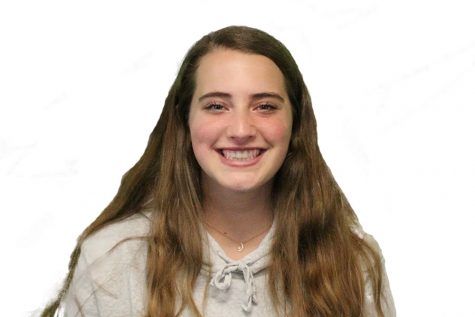
Twitter: Annawilky2020


December 9, 2020
Inequality.
Within seconds, a cloud of words such as systemic racism, injustice, and the wealth gap begins to form in one’s head.
Now take the word inequity. What does that mean?
Before the search bars open, the definition of inequity is “lack of fairness or justice.” You may think that these two words are interchangeable, but equality is not the same as equity.
Equality is the same as asking three people of various heights to perform an activity, such as grabbing an item off the top shelf. The shortest will not be able to do so, putting them at a disadvantage. “But they are equal,” some might say, and while that is correct, they do not all have the chance to succeed. Hypothetically, you can give out various sized stools to each person so they will all be the same height, but that isn’t the problem. There is still a disadvantage for some people to obtain their goals.
Applying that to real life, allowing everyone to enroll in high school doesn’t help those who don’t have the resources to be fully immersed in their education and community. Some people may not be able to get to school because they don’t own a car, or their families might not have enough money to pay for tutors and extracurriculars. Furthermore, high schools may not offer the number of credits that schools are looking for; many students don’t take another math class after Algebra II. All these factors play into the disadvantages faced by marginalized students.
Beyond education, inequity can affect the treatment of mental and physical health.
Health inequities are systematic differences in the opportunities groups have to achieve optimal health.
Senior Khyree Rollins implores Carlmont students to understand their privileges in this respect.
“The first thing to do is to realize your biases towards certain people or things. Acknowledging your privilege is different from understanding it,” Rollins said.
Studies have revealed that children from marginalized backgrounds who suffer from mental health disorders do not receive adequate health care. In 2015, a group of doctors did a research survey with Psychiatric Services, where they found that minority children lacked quality healthcare. One of the studies they performed was interviewing people of all ethnicities who have had depression to see if they were receiving adequate, if any, health care.
The research showed that in the past 12 months of the study, 63.7% of Latinos, 68.7% of Asians, and 58.8% of African Americans, compared with 40.2% of non-Latino whites, suffered from a depressive disorder. Among the respondents with depression, those in minority groups were significantly less likely than non-Latino whites to have received adequate care throughout 2014.
Compared with white adults, the risk of having a diabetes diagnosis is 77% higher among African Americans, 66% higher among Latinos, and 18% higher among Asian Americans. Mental and physical health is the most prominent study within the topic of inequity.
Diversity is a measure of the overall racial makeup of a school district. The average diversity score for schools is 0.68%, whereas Carlmont High School’s campus has a diversity score of 0.63%.
Carlmont for Change (CCC) is a group on the campus who help educate the student body by providing resources to those who need it. A member of the group, Jordan English, believes that while Carlmont does an excellent job of trying to be inclusive, there are many opportunities that the Carlmont community can pursue to fix these inequities.
“They need to be willing to cater to our needs such as counselors that are people of color or biracial people of color and help us feel more included on campus,” English said.
English says that she admires how students can form groups such as the CCC and express their opinions on topics that matter.
“It is hard to be able to feel comfortable in this society without constantly feeling ridiculed. Whether that is by our peers or by our figures of authority,” English said.
The lack of opportunity that minority groups face can be traced back to elementary school. One in four African American and Latino students who are not reading proficiently in third grade will not graduate high school on time. The 30+ point gap between Black and Latino students when compared to white students in their national NAEP reading scores has been virtually unchanged since 1990.
The Office of Community Engagement and St. Francis High School recently collaborated on a project involving health inequity. The project started when a group at St. Francis heard about George Floyd’s murder, and they wanted to help fight against injustice. At the time, the Stanford Community Engagement Office was looking for a project involving students.
Faculty Director Dr. Lisa Coleman’s stepdaughter was a part of the group of students who wanted to make a change. They decided to make a video about health inequity amongst minorities.
They planned to release the video on the Community Engagements home page. Research and community partnership coordinator, Olivia Tigre, wanted to shine a light on people that don’t feel like they are heard in their community.
“Our group doesn’t just go into meeting assuming what we think our community needs, rather we try and learn from them what they want, and we can work together to solve problems,” Tigre said.
The Office of Community Engagements is always looking for new opportunities to work with students, whether through internships, their youth program, or reaching out to schools for new ideas. A few years ago, a student made a “Wall of Learning” that hung in the San Mateo pediatric waiting room. This wall showed parents what they could do to help their children, such as taking them to the doctor to check up on diseases they may be more prone to, like diabetes.
“Students who want to help can also sign up for things like food banks, and it is always important for humans to relate to others even if it is on a level they didn’t know they share,” Tigre said.
Students interested in learning about helping their communities can provide the Stanford Community Engagement Office with new ideas.
“It is important that everyone can put a face to health inequity and see the struggle others go through, so it’s no longer just a term,” Tigre said.

Josie • Dec 9, 2020 at 11:06 am
super well written article and i liked your infographics 🙂